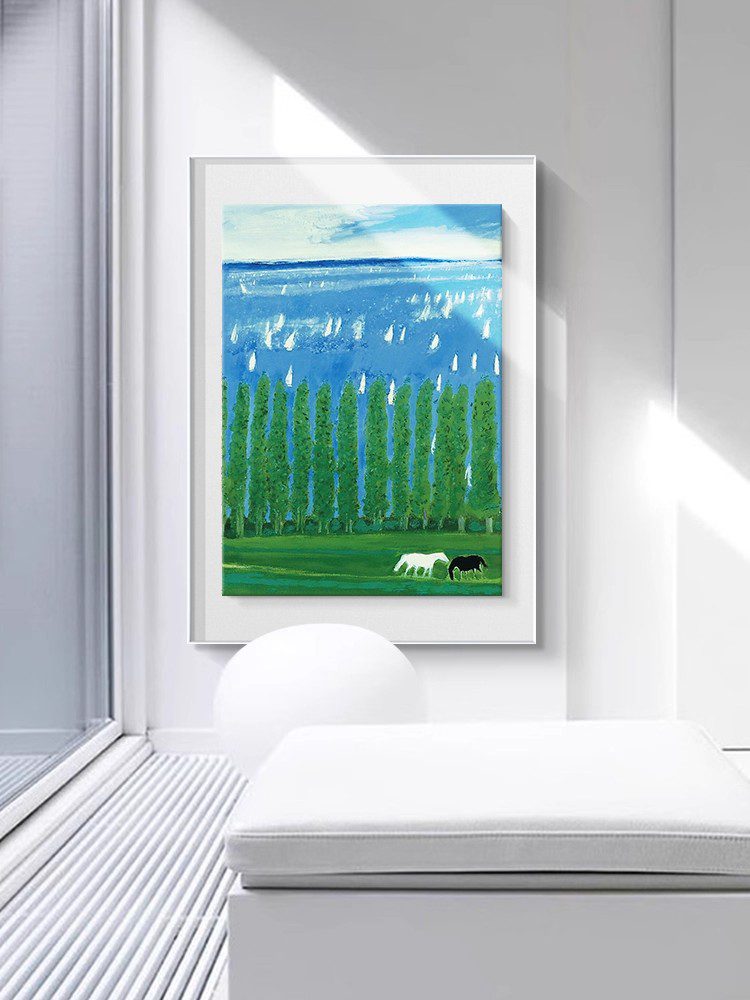Preserving Hand-Painted Oil Art: A Comprehensive Guide to Long-Term Maintenance
Hand-painted oil art requires deliberate care to maintain its vibrancy, structural integrity, and aesthetic appeal over time. Unlike prints or digital reproductions, oil paintings are vulnerable to environmental factors, physical damage, and chemical degradation. By understanding the unique properties of oil mediums and implementing preventive strategies, collectors can protect their artworks for generations. Below, explore key methods for preserving oil paintings, addressing environmental control, handling practices, and restoration principles.
1. Managing Environmental Conditions: Light, Humidity, and Temperature
Oil paintings are sensitive to fluctuations in light, humidity, and temperature, which can accelerate fading, cracking, or mold growth. To mitigate these risks, avoid displaying artworks in direct sunlight, as ultraviolet (UV) rays break down pigments and varnish layers. Instead, opt for diffused natural light or LED bulbs, which emit minimal UV radiation. If the painting must be placed near a window, use UV-filtering glass or curtains to reduce exposure during peak daylight hours.
Humidity control is equally critical. High moisture levels can cause the canvas to expand, leading to paint flaking or warping, while excessively dry conditions may make the paint brittle. Aim to maintain indoor humidity between 40% and 60%, using dehumidifiers or humidifiers as needed. Similarly, stabilize room temperatures between 18°C and 24°C (65°F to 75°F), as extreme cold or heat can stress the materials. Avoid hanging paintings in kitchens, bathrooms, or attics, where environmental shifts are common.
2. Proper Handling and Storage: Minimizing Physical Stress
Physical damage is a leading cause of deterioration in oil paintings, often occurring during transportation, relocation, or improper storage. When moving a painting, always support it from the back using clean, dry hands or gloves to avoid transferring oils from your skin to the surface. Never lift a painting by its frame alone, as this can strain the canvas or detach it from the stretcher bars. For larger works, enlist a second person to assist, ensuring the piece remains horizontal until securely positioned.
For long-term storage, choose a climate-controlled space free from pests, dust, and moisture. Wrap the painting in acid-free paper or cotton sheeting to protect it from scratches and dust, then place it flat in a sturdy, breathable container. Avoid plastic covers, as they trap moisture and promote mold growth. If stacking paintings, separate them with rigid boards to prevent pressure marks, and never place heavy objects on top. For framed works, store them upright with adequate spacing to allow air circulation.
3. Cleaning and Dust Removal: Gentle Techniques for Surface Care
Regular dusting is essential to prevent grime buildup, which can embed into the paint over time and alter its appearance. Use a soft, natural-bristle brush (such as a sable-hair brush) to gently sweep dust from the surface, working in one direction to avoid scratching. For textured areas, hold the brush at a slight angle to reach crevices without applying pressure. Never use vacuum cleaners, feather dusters, or abrasive cloths, as these can damage the paint or varnish.
If the painting requires deeper cleaning, consult a professional conservator. At-home attempts with water, solvents, or commercial cleaners risk removing paint layers or causing discoloration. Over time, varnish may yellow or crack, necessitating expert removal and reapplication. Signs that a painting needs professional attention include crazing (fine cracks in the varnish), flaking paint, or stubborn stains that resist gentle brushing.
4. Addressing Structural Issues: Canvas and Stretcher Bar Maintenance
The canvas and stretcher bars form the foundation of an oil painting, and their condition directly impacts the artwork’s stability. Periodically inspect the back of the painting for signs of sagging or bulging, which indicate loose tension. If the canvas appears slack, consult a conservator to re-stretch it, as improper adjustments can cause further damage. Avoid tightening the canvas yourself, as over-tightening may tear the material or distort the image.
Check the stretcher bars for warping or insect damage, particularly if the painting is stored in a damp environment. Wooden stretchers are susceptible to rot or pest infestations, which can compromise the canvas’s attachment. If the frame shows signs of deterioration, replace it with archival-quality materials under professional guidance. Similarly, ensure the painting is hung on secure hooks or nails to prevent accidental falls.
5. Protecting Against Pests and Pollutants: Preventive Measures for Longevity
Insects like silverfish, moths, and woodlice are attracted to the organic materials in oil paintings, including canvas, glue, and paint binders. To deter pests, maintain a clean storage or display area, and avoid storing paintings near food sources or damp zones. If insects are detected, isolate the affected artwork and contact a conservator immediately, as DIY treatments may worsen the damage.
Airborne pollutants, such as smoke, cooking fumes, or industrial emissions, can also harm oil paintings by forming a gritty layer on the surface or reacting chemically with pigments. Use air purifiers with HEPA filters to reduce particulate matter, and avoid displaying paintings in areas prone to heavy pollution. If the artwork is exposed to smoke or grime, dust it more frequently and schedule a professional assessment to evaluate potential damage.
Preserving hand-painted oil art demands a proactive approach that balances environmental control, careful handling, and professional expertise. By creating stable conditions, adopting gentle cleaning practices, and addressing structural or pest-related issues promptly, collectors can safeguard their artworks against common threats. Regular monitoring and collaboration with conservators ensure that even minor concerns are resolved before they escalate, allowing the painting’s beauty and historical value to endure.
